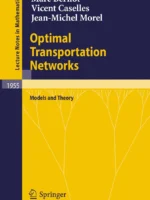Evolving Transportation Networks Review
Evolving Transportation Networks by David Levinson examines how transport systems grow and reorganize over time. It treats networks as adaptive: demand, cost, technology, and governance co-shape links, flows, and hierarchies.
Overview
The book covers growth processes, self-organization, network topology, economics of roads and transit, pricing and financing, and feedbacks with land use. Empirical patterns meet simple generative models.
Summary
Levinson shows how preferential attachment, cost–benefit decisions, and spatial competition yield corridor hierarchies and changing centralities. He analyzes investment rules, pricing, and regulatory regimes, linking them to network form and performance. Case studies trace historical buildouts and modal shifts.
Authors
David Levinson is a transportation scholar whose work bridges engineering, economics, and urban systems.
Key Themes
Path dependence and lock-in; induced demand and induced supply; governance and finance as network shapers; coevolution with land use.
Strengths and Weaknesses
Strengths: clear mechanisms for growth, useful metrics for topology and accessibility, and policy-relevant lessons. Weaknesses: simplified behavioral assumptions and limited high-resolution simulation. Use alongside microsimulation and travel-demand models.
Target Audience
Urban planners, transport economists, network scientists, and policy makers planning long-horizon investments.
Favorite Ideas
Accessibility as the unifying performance metric; incremental investment rules that reproduce observed hierarchies; pricing that steers evolution toward efficiency.
Takeaways
Networks evolve under incentives and costs. Set rules—pricing, standards, finance—that reward accessibility and reliability, and the network will grow in the right directions.






